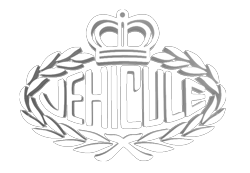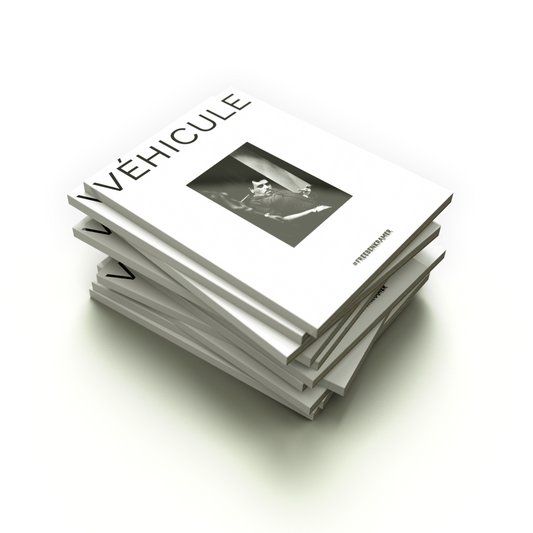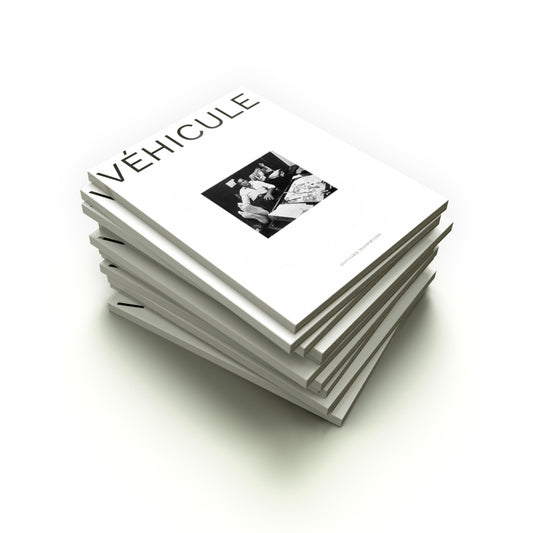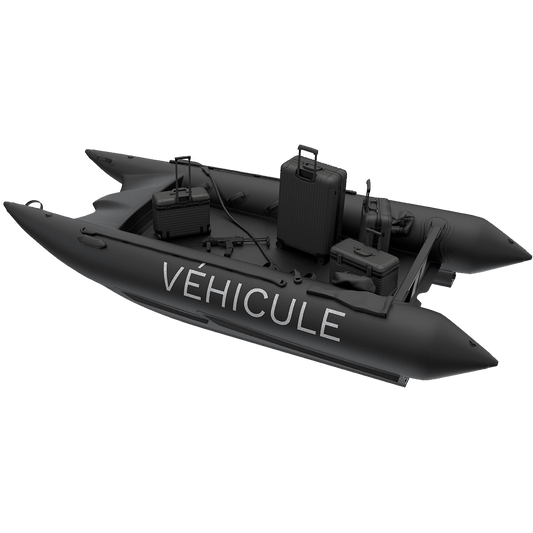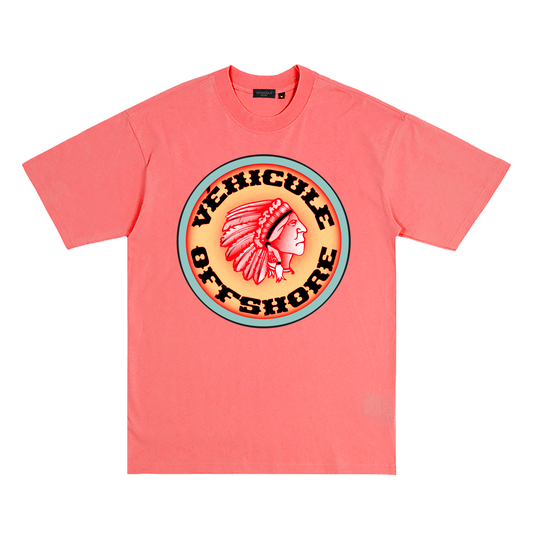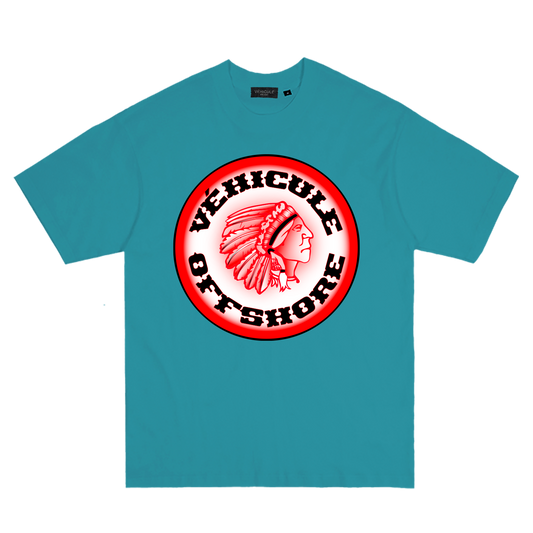Read all about drug smuggling history and modern day operations in VÉHICULE.
Everyone lies.
Cops, by virtue of being part of everyone, lie. Lying is integral to what they do, and without it, the job would be unrecognizably different. In large part, this goes unpunished. Why punish what is, or has become, a human reflex? To do so would be, simply put, counterproductive. Sometimes—only sometimes—people nearly lose track of their own lies. Other times, someone else's lies take precedence. And in rare cases, complex webs of mistruth are outpaced by what they intend to conceal. Bluffs expand faster than cover stories can keep up with, and consequently, no one knows who to believe. Nothing encapsulates this elaborate system more succinctly than the Miami River Cops saga does.By the late 1970s, Miami had fully undergone its transition from vacationer’s paradise to one of the most dangerous cities in the United States. What was once a tropical getaway was, by 1981, the site for the deadliest summer on record. All societal ills are as complex as society itself is, and decoding the genesis of any downfall isn’t the work of a layperson. That said, we can all make our own educated guesses, either based on what we know to be fact or personal biases. In the case of Miami though, its primary stressor, the drug trade, is well-documented.
The dramatic uptick in crime, in the opinion of the local government, necessitated an equal—and ostensibly opposite—increase in police presence. A rapid increase, and with that, lowered standards intended to widen the applicant pool. Who did and who did not make the cut was not under scrutiny at the time. The goal was numbers, by any means necessary. Those numbers moved the needle, to some extent, although perhaps not the needle intended. Now, murder was complemented by extreme wealth. Everyone profited from the drug trade—it touched all corners of South Florida society, whether you thought you were part of it or not.
In May 1985, the Miami River Cops, or “The Enterprise,” as they called themselves, pulled off the first of their operations (that the public, to date, knows about). At Nuta’s Boat Yard on the Miami River, police made a significant seizure of cocaine from a vessel docked there. The officers involved claimed to have seized 850 pounds of product. When the smugglers operating said watercraft were brought in for questioning, they claimed to have brought in an even 1,000 pounds. Although the police are naturally inclined to believe their own over the word of a smuggler, the apparently missing 250 pounds raised suspicion.
On July 13 of that same year, some ten Miami officers seized 400 kilos, or around 880 pounds, of cocaine from a vessel at Tamiami Marine, also on the Miami River. The attention-catching element of this seizure came not by way of the seized product itself, but rather in how the event played out. As this transpired, those on the boat were forcibly thrown overboard by the officers. This was tame as far as police brutality went, but it was notable enough to raise some sort of suspicion from the higher-ups. The Tamiami job marked a turning point for the scale and intricacy of what the River Cops would carry out.
The incident that would come to make headlines for decades to come was the job that the River Cops pulled on July 28, 1985. Late that night, eight men pulled up to the gate of Jones Boat Yard. "You've got a boat loaded with dope out there," they told the watchman on duty. He let them and their convincingly authoritative uniforms (some, but not all, were wearing cop garb) through. Once in, the eight stormed the 40-foot “Mary C.,” catching six smugglers in the midst of unloading 350 kilos of bricks—enough to net around $9,000,000 on the street. Fearing for their freedom and wanting to live to see the next payload, the six that were nabbed took the only way out available to them and jumped overboard.
The middle of the night is dark when you’re on the water, no matter how close to civilization you are. Lights that may have once dotted the shoreline quickly dissolve and you are left with no way to orient yourself. Before you know it, you find yourself floating in a dark expanse, with little sense of the world that you once knew. Tides are strong and unrelenting—more powerful and more ceaseless than you are.
Three of the six that went overboard were pulled from the river the next day, extricated from the grips of their aquatic executioner. The remaining three presumably survived. Each of the bodies, now waterlogged, had stacks of cash on them, were dressed nicely and had guns tucked into their waistbands—not the trappings of someone intending to go for a swim. The watchman who had let the eight alleged perpetrators into the boat yard the night before made a point of the fact that many of them were wearing police uniforms. The benefit of the doubt had him wanting to believe that these were simply criminals impersonating authority. The happenings of that year, paired with the rapid expansion of police hiring, indicated otherwise.
Ultimately, this Jones Boat Yard was the unraveling of the River Cops’ operation. Before, the cops had been anonymous. Once corpses turned up, investigators started looking into this in earnest. Early on in the process, an FBI tip singled out Luis Rodriguez—the proprietor or local bar Molino Rojo in Little Havana who had been found dead three days after the drownings were discovered. He was deposited out of the back of a pickup truck into an empty lot, stuffed in a pine box. When cops opened the box, Rodriguez’s bullet-riddled body was said to have popped up violently, leading the killing to be called the “jack-in-the-box murder.”
Rodriguez, apparently fed up with his bar’s clientele being arrested in the bar itself, thus ruining the night for everyone else, started giving up his criminal patrons. This way, they could be caught before they stepped foot in his establishment. Eventually, this morphed into him acting as something of a broker between police and drug smugglers—for a cut of the take, Rodriguez would inform cops as to when boats were arriving or when a deal was happening. The next step was him setting up deals with the express purpose of having them busted.
Investigators received a tip from a homicide detective who purported to know of a cop who had associated with Luis Rodriguez—Armando Estrada. Estrada, by way of alluding to a phony informant, would end up exposing Roman Rodriguez, a collaborator of his. Armando Roque, often referred to in public records as Armando Un, was a security guard for bar owner Rodriguez. Un, who spent 17 years in Cuban prison for anti-Castro activities, met Rodriguez while there. The pair would stick together after their move to Miami.
Un, when pressed, named names to fill out the core of the River Cops. Rudy Arias completed the trio. Along with Armando Estrada, Roman Rodriguez and Rudy Arias, Arturo de la Vega, Osvaldo Coello and Armando Garcia were fingered as those next in command.
Evidence against those named began to mount, either by way of investigators or through the perpetrators themselves, who had let their power manifest in ways that proved too ostentatious for their police colleagues’ taste. Osvaldo Coello was the first to fall after being arrested on August 17, 1985—only two days after he had resigned from his job with the Miami Police Department—for leading a 120-mile-per-hour police chase in his red Lotus. The Orlando Sentinel summed up the goal of the River Cops operation most succinctly in their article on the arrest with a tongue-in-cheek headline stating “How to Drive a $59,000 sports car on $25,000 a Year.”
By the end of that year, five cops had been arrested—that is, seemingly, what happens when one gets caught in a lie or when there’s a weak link in one’s circle. In October 1986, after nine months of preparation, the trial against the River Cops begins. This was touted as the trial that would end an era in Miami, for the better, although proceedings quickly took an unanticipated turn. Armando Un was meant to be the star witness but proved unreliable out of the gate, and sealed his fate by misidentifying one of the officers he said was involved. The River Cops’ attorneys, funded by the Cops’ fresh fortunes, effectively instilled in the jury the crucial, discrediting nature of this misstep.
After three and a half months, the trial concludes. Armando Estrada and Roman Rodriguez are found guilty. In tense moments following the verdict’s announcement, by the defendants’ request, the judge cycled through each jury member to confirm their rulings. One juror states that his verdict was incorrectly recorded, setting off a mistrial. The River Cops were allowed to walk, set free until their next trial.
It was not until May 1987 that a new set of indictments would be handed down. In the intervening months, a breakthrough was made: Rudy Arias, one of the three cops central to the case, flipped. That month, he would give a debriefing amounting to 122 pages. These pages detailed out a significant portion of the operation, and even revealed jobs that had previously gone undetected. In 2000, the Miami New Times acquired the debriefing and, based on it, pieced together a chronicle of a certain incident that took place that same year. The debriefing details an early-1987 meeting between Arias and Osvaldo Coello in which they plotted to kill Dick Fiallo—a man who was preparing to testify against the two.
Fiallo was a one-time collaborator who Coello thought might turn. Together with a civilian, Arias and Coello cased Fiallo’s house to see how viable the operation was. Once it checked out, they acquired the Mac 10 machine guns needed to finish the job.
At a party the next day, plans solidified: It was decided that they would meet that night to take Fiallo out.
Under the cover of darkness, the two pulled up with their respective crews to a 7 Eleven near Fiallo’s house in their new Nissans—an S12 200SX and an S130 280ZX. From there, they drove the short distance to their target’s house. Upon discovering that he was not there, they checked local clubs with little luck. This left them time to plan. After considering a drive by-style killing, they settled on hiding in the house’s bushes and shooting Fiallo when he arrived back home. They waited until 5 am, and when there was no action, they gave up.
This, in itself, seems unremarkable. No damage was done, and they ended up giving up on Fiallo altogether. It does, however, point to the ongoing nature of the River Cops’ active engagement in shaping their own fates. They were undeterred by the previous trial. If anything, they became hypermotivated to craft their upcoming trial, no matter what it took.
Their intention, by and large, went unrealized. Their trial resulted in convictions or plea bargains. De la Vega, Estrada, Rodriguez and Garcia were each sentenced to 30 years on racketeering charges. Arias, as a reward for his cooperation, was sent into the witness protection program.
As the legal system made its way through the River Cops, over 100 of them ended up being disciplined in some way, with around 20 of those actions being prison sentences. Predictably, as with most punishments handed down to police, their penalties were light, and their sentences were eventually not served in full—most, if not all, of those involved are now walking free. Many have been out for years, with the River Cops era simply being a minor hurdle.
Make no mistake: This was gang activity. While police had ostensibly made it their mission to rid the streets of organized crime, they neglected to look inwards. This is, of course, not an isolated incident, and did not stop with the River Cops. If anything, the River Cops were simply a lesson in subtlety—their only true misstep was getting caught, and operating outside of permissible bounds. Nowadays, police misconduct is more refined, having taken lessons away from their colleagues in Miami. Armando Estrada, Roman Rodriguez and Rudy Arias were vital to policing in that they tested the limits of what is and is not acceptable on the force—where the line is drawn between what is condoned and what can be made a public spectacle. To some, they symbolize corrupt cops. To others, they are shining examples.
Read all about drug smuggling history and modern day operations in VÉHICULE.
